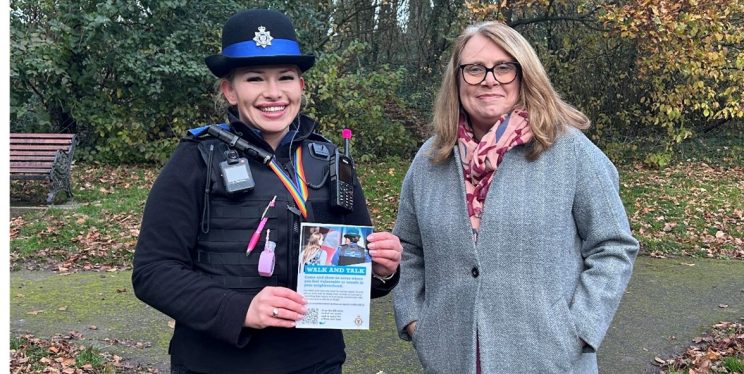IWD: Safety in Public Spaces

Deputy Police and Crime Commissioner’s Blog
As Deputy Police and Crime Commissioner, my mission is not just to be a liaison between our communities and the police. It’s about understanding the deep impact of crime on people’s lives and striving for meaningful change. For Bristol Women’s Voice’s International Women’s Day event, I was asked to talk on a panel that considered the crucial issue of women’s safety in public spaces.
The statistics paint a troubling picture. According to the Opinions and Lifestyle Survey (ONS 2021), two out of three women aged 16 to 34 had experienced harassment in the previous year. Catcalls, whistles, unwanted comments—these are daily realities for far too many women. Moreover, fear of crime disproportionately affects women, with a greater proportion feeling unsafe in various public spaces and feeling like they must factor this into planning their lives.
It’s important to have the data to guide our next steps, but statistics alone don’t drive change; action does. That’s why creativity and collaboration are at the heart of our approach. Research shows that coordinated initiatives, like increased surveillance and alternative reporting methods, are crucial in tackling sexual offenses in public spaces.
One exemplary initiative in our region is the Walk and Talk Scheme, led by Avon and Somerset Police. This service allows women to walk alongside female officers or PCSOs in areas where they feel vulnerable. It’s a proactive step towards community engagement and support, operating in East Somerset, North Somerset, and West Somerset.
However, challenges remain. Despite good collaborative work, police often find themselves excluded from planning discussions, particularly concerning new developments. It’s essential to include them at the table to ensure their valuable contribution that can help us to design out crime.
We’re also leveraging technology to enhance safety. The Streetsafe tool allows the public to report unsafe locations, enabling the police to adjust patrols and improve the built environment. Data sharing and hotspot identification are critical in our efforts, informing targeted interventions to reduce violence.
I am also proud of the section of our Safer Streets work that includes Bystander programs. These play a vital role in prevention, encouraging individuals to intervene or report incidents of sexual assault in ways that feel safe.
As we mark International Women’s Day, let’s reaffirm our commitment to creating a future where every woman and girl feels safe in public spaces. It’s an ongoing journey that demands dedication and collaboration. Together, we can build a world where fear doesn’t limit lives.
